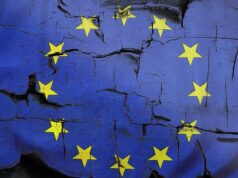Around 700 million people now travel to the European Union each year. It is becoming increasingly difficult for border officials to review documents and data. This is especially true for citizens from third countries. The EU is now considering deploying novel intelligent lie detectors to prevent illegal immigration in the future before entering the country: by video chat with an avatar, anyone who makes false statements should be exposed as a result of „microexpressions“ on the face. The goal is, for example, to fish out criminals or terrorists in time.
The new technology called Intelligent Portable Border Control System (iBorderCtrl) is already well advanced and is scheduled for a test run in Hungary, Latvia and Greece. With 4.5 million euros, Brussels is supporting the project, in which eight states – including Germany with the University of Hannover – are involved.
„Because the EU is working to improve border management, we also invest in research to find out how to make border controls faster and more efficient,“ said a spokeswoman for the EU Commission WORLD. From circles of the commission authority it also means, however, that the project has not yet reached the „political level“. That could change soon.
How does the intelligent border control system work? There are two phases of the review for non-EU travelers: phase one takes place well ahead of entry, while phase two takes place during the border crossing. In phase one, people should register online before the planned trip, upload images from their passport, current and past travel dates, proof of sufficient financial resources, vehicle data and the visa. Subsequently, a virtual border official appears, asking questions that are tailored to „the gender, ethnicity and language of the traveler“, as stated in an article by the European Commission.
Specifically, this concerns, for example, the suitcase contents or details of the planned stay in the EU. The interrogation with the avatar is recorded. The smart polygraph will now use 38 „very fine-grained micro gestures“ in the face to see if the respondent is lying or at least uncertain. These are very small-scale facial expressions that are neither easy for the respondent to control nor easily recognizable to the viewer. Frowning, smiling or the movement of the eyes are not included.
The classification comes from the psychologist Paul Ekman, according to which the 43 facial muscles can produce around 3000 significant facial expressions. Whether the polygraph really works in practice is controversial. In a test, there was a hit rate of 76 percent. However, one works on optimizations, it was said from circles of researchers.
In phase one, the system sorts travelers into a „low-risk“ and a „high-risk“ group. Phase two will take place during the border controls. The border guards check the data of the „low-risk“ persons only briefly. However, „risky“ travelers are scrutinized more closely. Mobile fingerprint scanners and mobile phone recognition are used. The biometric data will then be compared with EU databases such as the Schengen Information System. In addition, the border guards can interview the traveler again with a mobile lie detector.
Data scientist Bennett Kleinberg told the Guardian that it was a „pseudoscientific“ method. Stress is not a good indicator for finding the truth. Bruno Verschuere from the Institute of Forensic Psychology at the University of Amsterdam said „micro-expressions“ did not really say anything about whether people are lying. It is also unclear what should happen to the data collected. A spokeswoman for the European Commission said: „All our research and innovation activities must be consistent with ethical principles and relevant national, European and international laws.“



